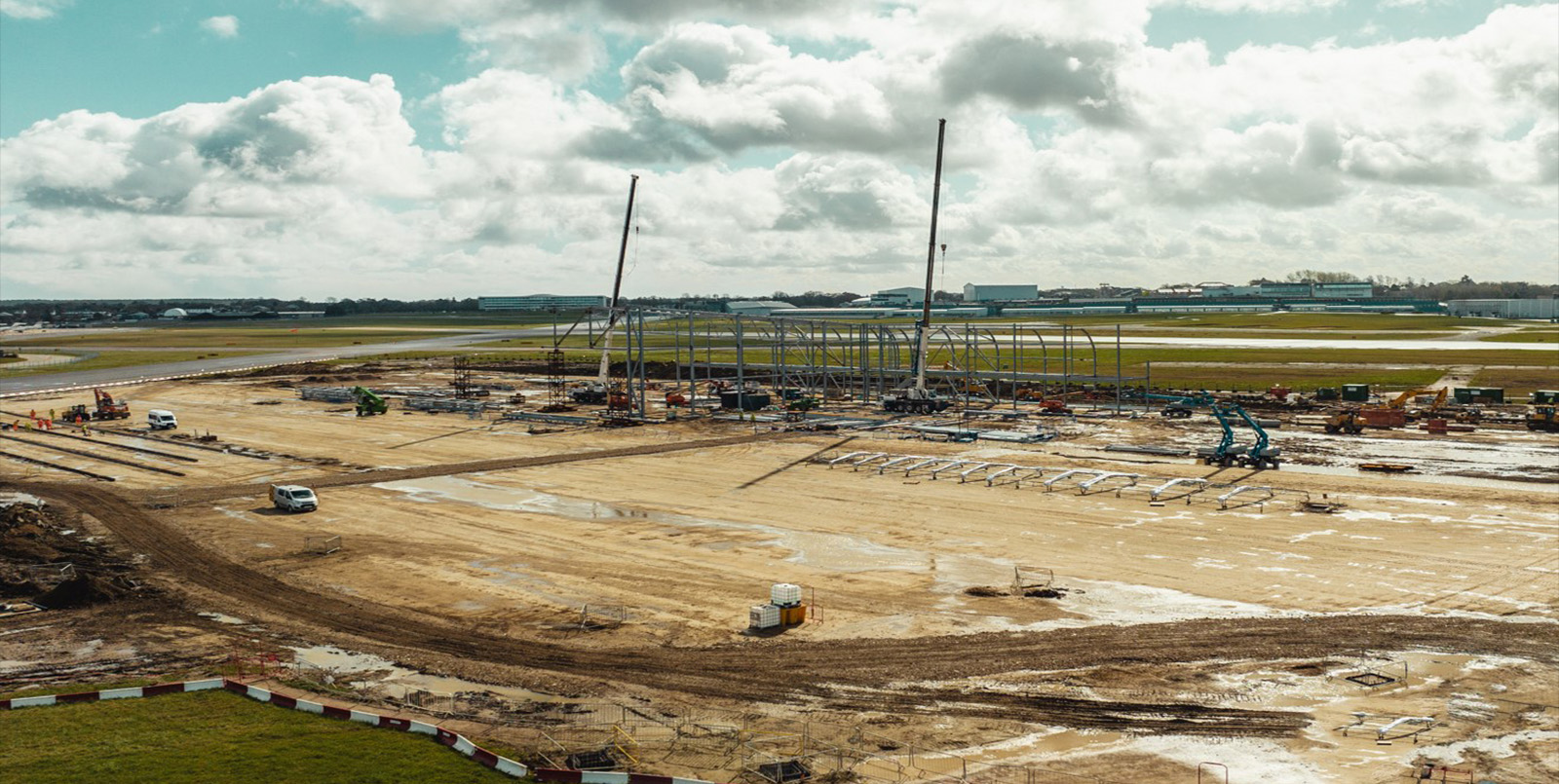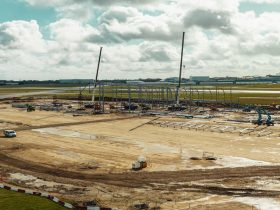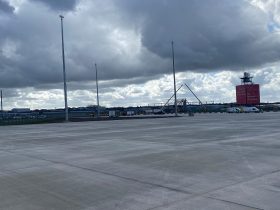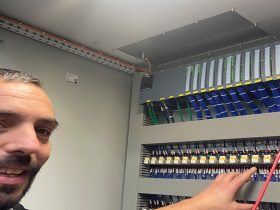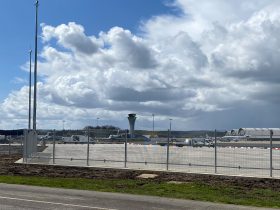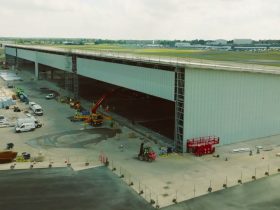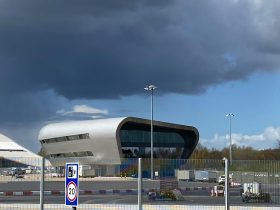New Hanger and taxiways
New Hanger and taxiways
In response to growing demands for enhanced aircraft parking capacity, improved road safety, and increased operational efficiency, a comprehensive project was initiated to address these critical needs. The project aimed to augment aircraft parking capabilities while prioritizing road safety and connectivity across the airfield. Additionally, it seeked to bolster aircraft movement capacity on the ground and expand aircraft parking capabilities and facilities.
The project’s scope encompassed various facets of airfield infrastructure enhancement, including the extension of existing aprons to accommodate larger aircraft, the construction of a new Hangar, and the development of a new apron and taxiway in conjunction with the new Hangar. Furthermore, a new access road leading to the Hangar was to be established to facilitate seamless transportation logistics. To complement these improvements, the project also included initiatives such as increasing car parking availability at the Control Tower, installing new high mast lighting systems, and establishing a dedicated area for Fixed electrical ground power units (FEGPU) charging. Additionally, provisions for electric vehicle (EV) charging positions were integrated into the project to align with sustainability goals and accommodate the growing demand for electric ground support equipment.
Airfield Lighting
A new taxiway, designated as Juliet, was successfully constructed at Hangar 3, complemented by a comprehensive turnkey solution for the development of new aprons and taxiway routes surrounding the Hangar. This encompassed the procurement and installation of state-of-the-art Airfield Ground Lighting (AGL) equipment, including LED taxiway centerline and stop bar lights from the FX range of lights manufactured in the UK factory. These fixtures were installed along with transformers, primary and secondary connectors. The installation process involved routing new AGL primary and secondary circuits through a newly constructed pit and duct system, ultimately connecting to recently installed Micro200 Constant Current Regulators (CCRs) housed in a newly constructed substation. Additionally, IR858I LED information signs were deployed along the taxiway routes and apron areas to enhance pilot and ground vehicle navigation. A crucial aspect of the project was the implementation of individual segment control for the taxiway lighting, aimed at optimizing aircraft routing. The necessary hardware for this functionality was integrated into the taxiway and apron infrastructure, with connections established back to the substation. These control cabling for the routing was interfaced with PLC cubicles and the incumbent atg airports AGL control and monitoring system. Throughout the project lifecycle, ATG Airports collaborated closely with all stakeholders, including NATS, FAL, and M&H, to provide functional design expertise for the AGL Control System. This involved the incorporation of new lamp control hardware into the airfield infrastructure, ensuring efficient routing functionality to meet operational requirements.
New Tower Substation
In order to support the development of the new airfield layout and the construction of Hangar 3, a dedicated substation was constructed. As part of atg airports’ scope of works, a comprehensive fit-out package for all services within the substation was provided, installed, and commissioned. This encompassed the installation of various essential equipment, including:
- A new 250kVa Standby Generator and attenuation system, complete with an external bulk fuel tank
- Implementation of a Fire Alarm system
- Deployment of Low Voltage (LV) Panels
- Provision of Small Power and Lighting solutions
- Integration of a Dali lighting system for enhanced control and energy efficiency
- Installation of Low Voltage (LV) Switchgear
- Implementation of all necessary containment structures to ensure safety and organization within the substation.
High mast lighting
As part of the project, atg airports also provided high mast lighting towers for the newly constructed apron. The main goal was to ensure effective illumination of the new Hangar apron, prioritizing optimal visibility and safety for operations. A detailed design was developed, accompanied by a proposed installation method. This involved the provision of 13 additional high masts, each equipped with a rising and lowering carriage system for the floodlights. Additionally, every mast featured four floodlights and an obstruction light to enhance visibility and safety measures.
FEGPU’s & EV charging
As an enhancement to the infrastructure of the new Hangar, the necessary infrastructure was installed to accommodate the e-PGU positions. The installation process involved the implementation of submain cabling, distribution equipment, and feeder pillars strategically positioned on both sides of the Hangar at the GPU locations. Furthermore, recognizing the increasing demand for electric vehicles (EVs) and the airport’s commitment to sustainability, atg airports were contracted to add additional electrical supplies within feeder pillars. This proactive approach not only met the current requirements of the airport but also anticipated future needs, particularly in terms of facilitating new EV charging points. By seamlessly integrating these enhancements, ATG demonstrated its expertise in providing comprehensive solutions tailored to the evolving needs of modern airports. The successful completion of this project underscores atg airports dedication to innovation, efficiency, and customer satisfaction. Our team’s proficiency in executing complex installations ensures that airports can operate smoothly and sustainably, meeting the demands of today while preparing for tomorrow’s challenges. This case study serves as a testament to atg airports unwavering commitment to excellence in the airfield ground lighting industry.


